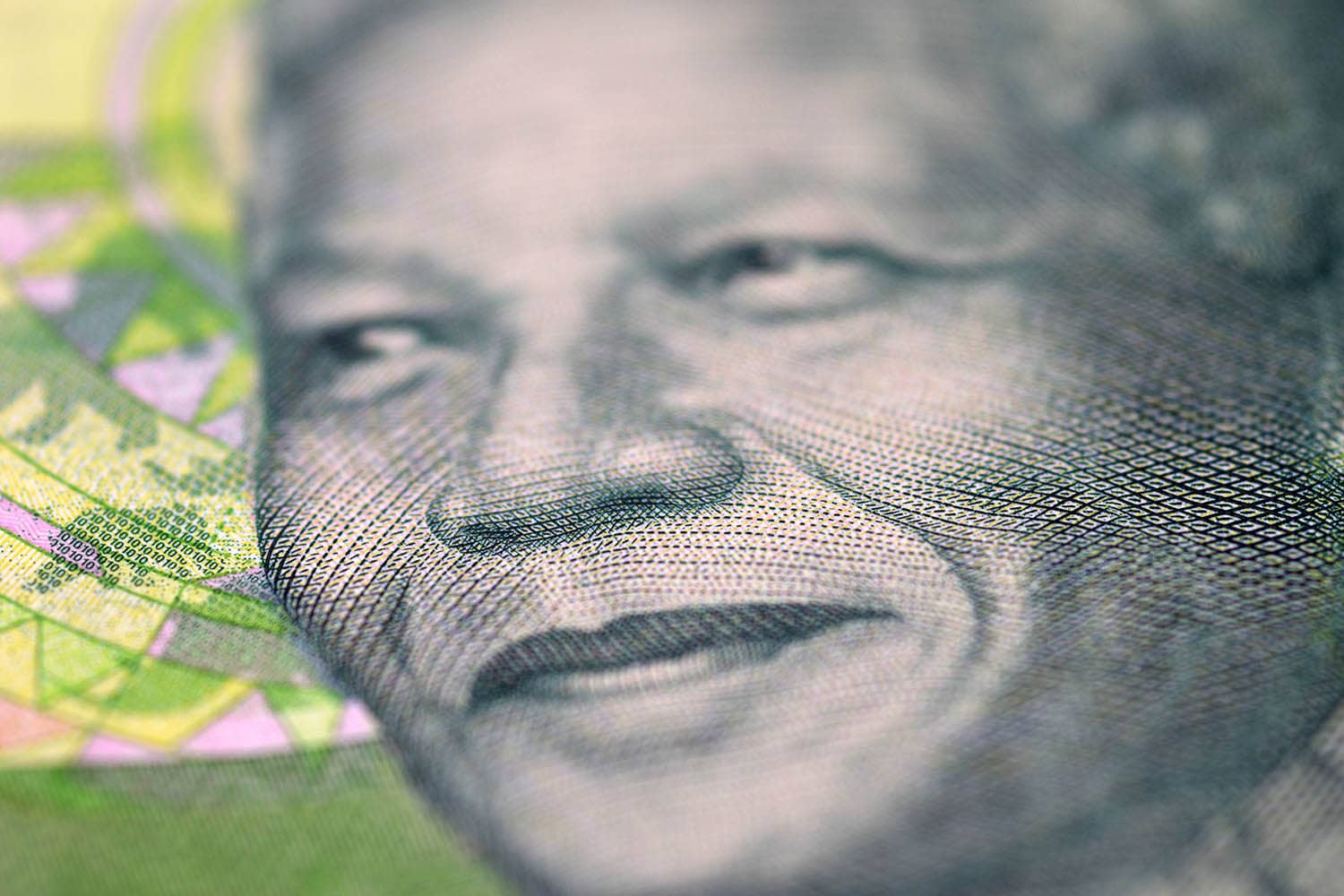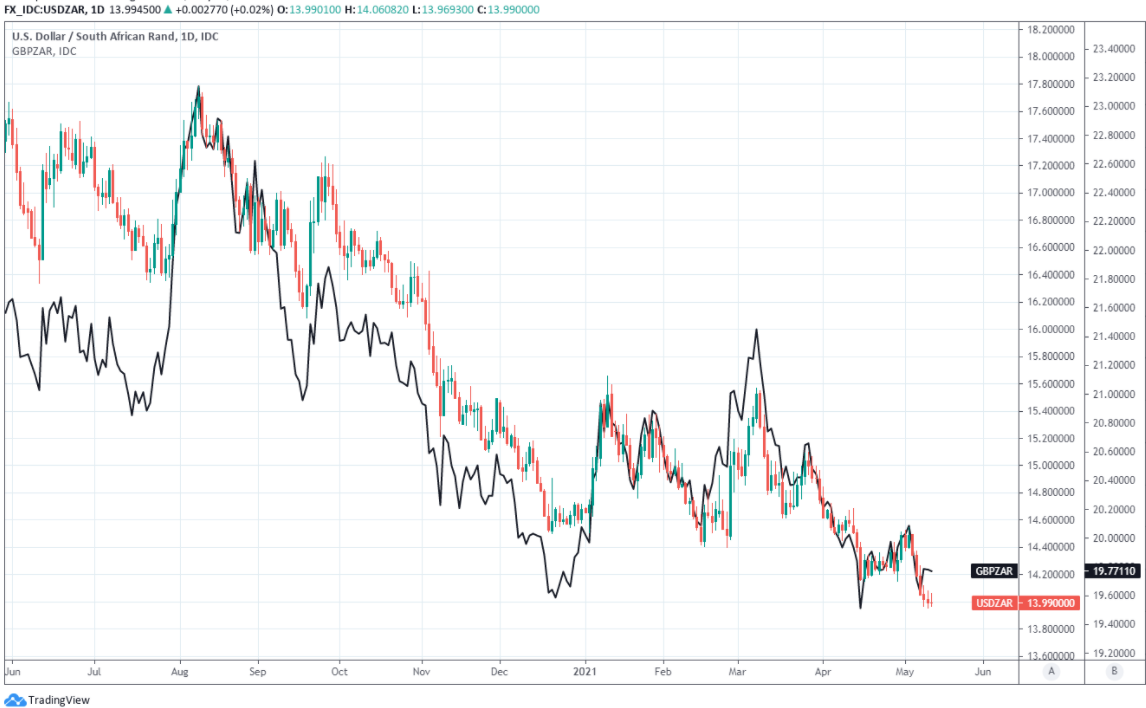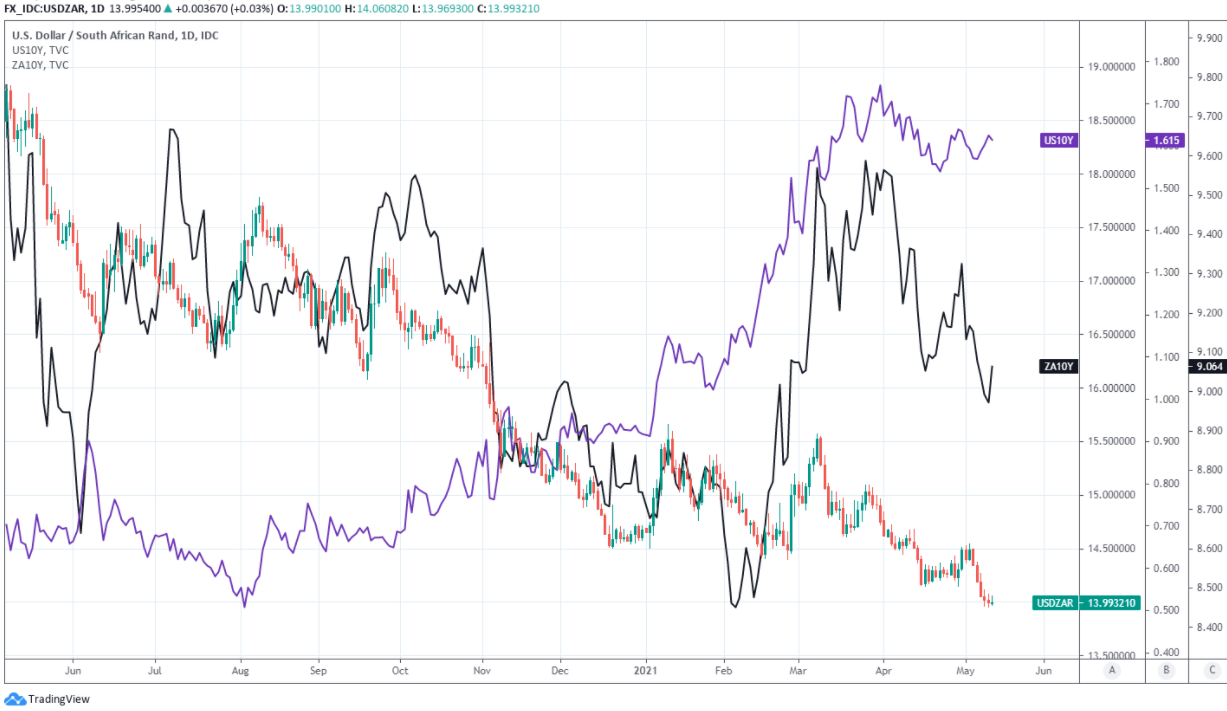South African Rand Eyes New Milestone Highs
- Written by: James Skinner
- ZAR nears late 2019 highs, major chart level
- After taking 2021's FX league table by storm
- But USD fall & ‘carry trade’ may yet support

Image © Adobe Images
- GBP/ZAR reference rates at publication:
- Spot: 19.79
- Bank transfer rates (indicative guide): 19.10-19.30
- Transfer specialist rates (indicative): 19.60-19.65
- Get a specialist rate quote, here
- Set up an exchange rate alert, here
The Rand was within arm’s reach of new milestone highs against the Dollar on Wednesday and levels that could be sustainably achieved over the coming weeks if ongoing developments in the U.S. bond markets lead to renewed interest from international investors in the comparatively higher yielding South African assets.
South Africa’s Rand was edging higher against almost all major developed and emerging market currencies on Wednesday having scored its fifth consecutive gain over a receding Dollar, in the prior session, which had furthered a strong run of gains that made the Rand an outperformer over multiple time frames.
The Rand has ceded ground to only the Brazilian Real in the major emerging market sphere this last week and gotten the better of all major developed world currencies.
Similar is true of the last month in which the Canadian Dollar was the only G10 currency to pip the Rand while in the emerging markets, the Indonesian Rupiah and Brazilian Real were all that could pull ahead of the South African currency.
“Fed tapering expectations, which temporarily put the rand and other EM currencies under selling pressure at the end of February, have recently been further scaled back. The rand benefited accordingly,” say Elisabeth Andreae, a currency analyst at Commerzbank, who tips USD/ZAR for a year-end finish around 14.0.
“It remains vulnerable due to the fragile economy. Rising case numbers show that the pandemic remains a risk for the time being.”
Above: USD/ZAR shown at daily intervals alongside GBP/ZAR.
For 2021 as a whole the Canadian Dollar has edged out the Rand by around 0.36%, but with no other developed or emerging world currency able to get ahead of a South African unit.
The Rand has outperformed even amid occasional bursts of strength in U.S. Dollar exchange rates and despite the odd rally in American government bond yields, with its resilience taking many parts of the market by surprise and prompting questions of how long it could continue for.
“Driving that performance is undoubtedly the commodities boom, where March recorded a record ZAR52bn trade surplus – driven by exports of precious metals and minerals. There are no signs that these commodity trends are ready to reverse anytime soon,” says Chris Turner, global head of markets and EMEA head of research at ING.
Rand gains and Dollar declines took USD/ZAR beneath 14.0 for the first time since late 2019 on Tuesday in price action that appeared to suggest the exchange rate could be on course for an important technical trendline that was flagged in mid-April as a medium term target by Andreae’s Commerzbank colleague Axel Rudolph.
Secure a retail exchange rate that is between 3-5% stronger than offered by leading banks, learn more.
Contact with the level or any USD/ZAR decline into the nearby area might be likely to prompt some consolidation or even a corrective rebound, as is often the case after strong one-way directional moves in exchange rates.
But there’s no shortage of reasons for why the Rand might still be able to hold onto the rump of its recent progress.
“South Africa has also seen very substantial rand strength this month and last, which will calm imported inflationary pressures meaningfully, particularly from oil prices. Indeed, with the sharp strengthening of the rand, a petrol price cut of around 6c/litre is building for June,” says Annabel Bishop, chief economist at Investec.
Prominent among the reasons for ongoing Rand strength is an emerging trend to the downside for Dollar exchange rates and steadier, stabler conditions in the global bond markets, which could potentially incite renewed interest from overseas investors in comparatively higher yielding South African assets.
U.S. bond yields have spent much of the time since late March in decline, which has taken wind from the Dollar’s sails.
Above: USD/ZAR at weekly intervals with 10-year U.S.and South African government bond yields.
The further U.S. yields fall or more difficulty they have rising over the coming weeks; the more likely international investors would be to look toward the higher-yielding assets available in places like South Africa.
“The ZAR staying bid could see SARB backing away from hikes” ING’s Turner says.
Turner and the ING team say that strength in the Rand will help to curb inflation pressures by reducing the cost of imports, thereby lessening or even eliminating any imperative for the South African Reserve Bank to raise interest rates this year.
That would put a supportive floor under South African government bond prices and may, when combined with the high yield offering of those bonds, be enough to entice international investors back into the South Africa’s government bond market in what would be a supportive turn of events for the currency.
Foreign investors had reduced their holdings of South African government bonds during the opening quarter of this year, a period in which the Dollar rose against many currencies including those in emerging markets, with price action coming alongside earlier increases in American bond yields.






